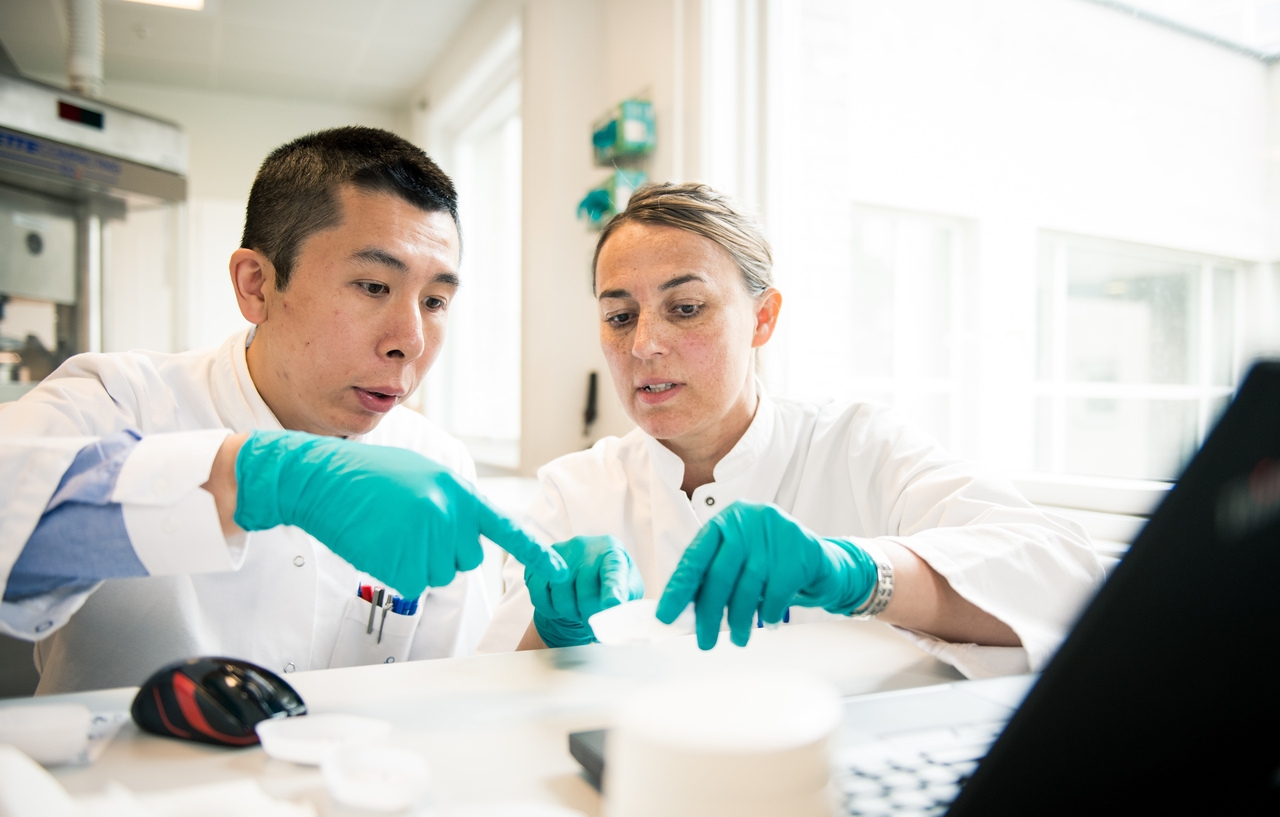For over a century, we have successfully leveraged our core capabilities in engineering, formulating, developing and delivering protein-based treatments for those living with serious, chronic diseases, primarily based on our core technology platforms: peptides and proteins.
To ensure future success of our discovery processes, we continuously strengthen our capabilities and invest in emerging and cutting-edge technologies. Today, we have technology platforms covering a number of core areas, which are essential to drive innovation across the diseases we target.





Our core expertise lies in discovering and developing new protein-, peptide-, and antibody-based drug therapies. We do this by applying a comprehensive spectrum of state-of-the-art protein and peptide technologies to generate optimal cell-based expression systems; to engineer modified proteins and peptides; and to create new and improved formulations. Since 1923 we have used and honed these technologies to design and engineer proteins that mimic the actions of naturally occurring proteins when introduced as a life-saving treatment for various diseases.
Proteins are key elements in orchestrating almost every physiological function that is required to survive, grow and thrive. If a specific protein is absent or reduced in either quantity or function, a state of serious disease can follow.
In the case of diabetes, the protein hormone insulin is lacking or ineffective (either because the cells which produce insulin are destroyed by the immune system, or because the body develops a resistance to the effects of insulin).
In the 1920s our founders were successful in purifying and mass-producing insulin in order to provide a well-tolerated and effective treatment for diabetes, an otherwise deadly disease.
Since then, we have been further refining and improving our ability to engineer, manufacture, purify and administer proteins for the treatment of diabetes, obesity, MASH, rare blood disorders, rare endocrine disorders, chronic kidney and cardiovascular disease, as well as other diseases and conditions.
RNA interference (RNAi) is a biological process used by complex, multicellular organisms to control which genes are expressed or silenced, and as a defence mechanism to protect cells against viral invasion and parasitic nucleotide sequences.
Since the discovery of RNAi in the 1990s, it has become clear that, due to it being precise, efficient and stable, RNAi will be a valuable technique in the artificial suppression of undesired/target genes.
There are many diseases in which symptoms can be relieved by silencing genes by RNAi. Silenced genes can have a direct benefit for the given disease in the target cell or systemically. In addition, RNAi may silence a gene that is otherwise preventing beneficial genes from being expressed.
In such cases, a therapeutic approach is to target the mRNA molecule (carrying the code of the gene of interest) for degradation before being transcribed. This way, no protein can be produced and therefore the gene becomes silenced.
We are exploring novel targets to treat liver-related cardiometabolic diseases, diabetes, obesity, cardiovascular disease and MASH, as well as rare diseases. We combine world-leading expertise and technologies in RNA interference with extensive disease understanding and development experience that we have accumulated over the past century.
Small molecules remain the most widely used modality in the pharmaceutical industry. They are made chemically on a large scale and can be conveniently taken as an oral tablet without dosing conditions. As small molecules can also enter cells and interact with intracellular targets, they expand the number of potential biological targets that can be researched and can reach tissues in the body inaccessible by other modalities.
Genome editing is a type of genetic engineering in which DNA is inserted, deleted, modified or replaced in the genome of a living organism. Unlike early genetic engineering techniques that randomly inserted genetic material into a host genome at an undefined site, genome editing targets the intended modification to specific genetic locations of interest.
The genome is a large, complex set of instructions which includes the codes for individual genes, and sections of ‘regulatory’ code that are used to help control when and where a given gene is expressed. For some diseases gene therapy replaces a defective gene with a normal allele at its natural location. Doing this takes advantage of the associated regulatory and processing code nearby, allowing the smallest possible modification.
There are many chronic diseases which are caused by genetic mutations, and which don’t have an existing curative treatment available. While protein replacement and RNA interference (RNAi) can alter the levels of protein in the body, the effects of these treatments are temporary, and there can be limitations to their effectiveness.
Altering the incorrect code right at the source, without affecting any other part of the genome, holds the promise of delivering a true cure for a genetic disease. The corrected cells can continue to grow and divide in the body, maintaining the treatment for life, no matter the age of the patient when the treatment is administered.
The value of genome editing as a technology with the potential to cure chronic diseases hasn’t passed us by. Over the years we have explored a number of ways to apply this approach in order to transform the lives of those affected by serious, chronic diseases. We develop genome editing treatments for genetic diseases, with one focus being on correcting FVIII-clotting factor deficiency haemophilia, with the ambition of offering a lifetime free of factor replacement therapy for people living with haemophilia A.
Stem cells are precursor cells that can proliferate over and over again. When exposed to the right triggers, they have the unique ability to develop into the different fully specialised cells which make up our organs systems.
Naturally, stem cells can be found at all stages of human development and play a crucial role in maintaining the right cell-composition in the body as it grows; replacing specialised cells that are damaged or lost.
During the differentiation process, individual stem cells, in this case pluripotent stem cells, become more and more specialised and the number of different cell types they have the potential to develop into is reduced along the way.
In our research, production and development processes we use our knowledge and experience to drive the pluripotent stem cells towards the required cell-types for our different regenerative cell therapy clinical trials.
For serious chronic diseases caused by the loss or malfunction of specific cell types, pluripotent stem cells can potentially be used in a curative process, by replacing those absent or dysfunctional cells.
For almost two decades, we have been intensely focused on understanding the biology underpinning the development of the pancreas, and translating this knowledge into a directed differentiation process, to drive the transformation of pluripotent stem cells towards insulin producing pancreatic beta cells. Our aim is to replace these cells which are lost in type 1 diabetes.
We have now expanded our commitment to stem cell-based research to other serious chronic diseases, with the hope of continuing to offer life-changing treatments to even more people in the future.
Our aim is to grow the highest quality stem cells and differentiate them into specialised cells of choice – both processes that require cutting-edge skills and expertise.
Once a target has been identified and validated, the next step is to find molecules that might inhibit or enhance the target’s activity. Current techniques allow many thousands of compounds to be screened quickly. Compounds that initially show the effect we want are called 'hits'.
We refine hits by testing their efficacy and safety in many different ways, and only the very best molecules will make it all the way through the research and development pipeline to become medicines – those molecules which have an efficacious effect on a disease and which don’t show significant negative side effects, but are safe to be taken.
It is an extensive and rigorous process that can take 10-15 years (or more), from the initial idea to advancement through clinical development and finally receiving approval from regulators.
The stakes are high to get the correct target from the very beginning and to develop a treatment towards it. To do this, we rely on our research technology platforms that drive innovation and provide us with the techniques, methods and processes that enhance our accuracy and search.


